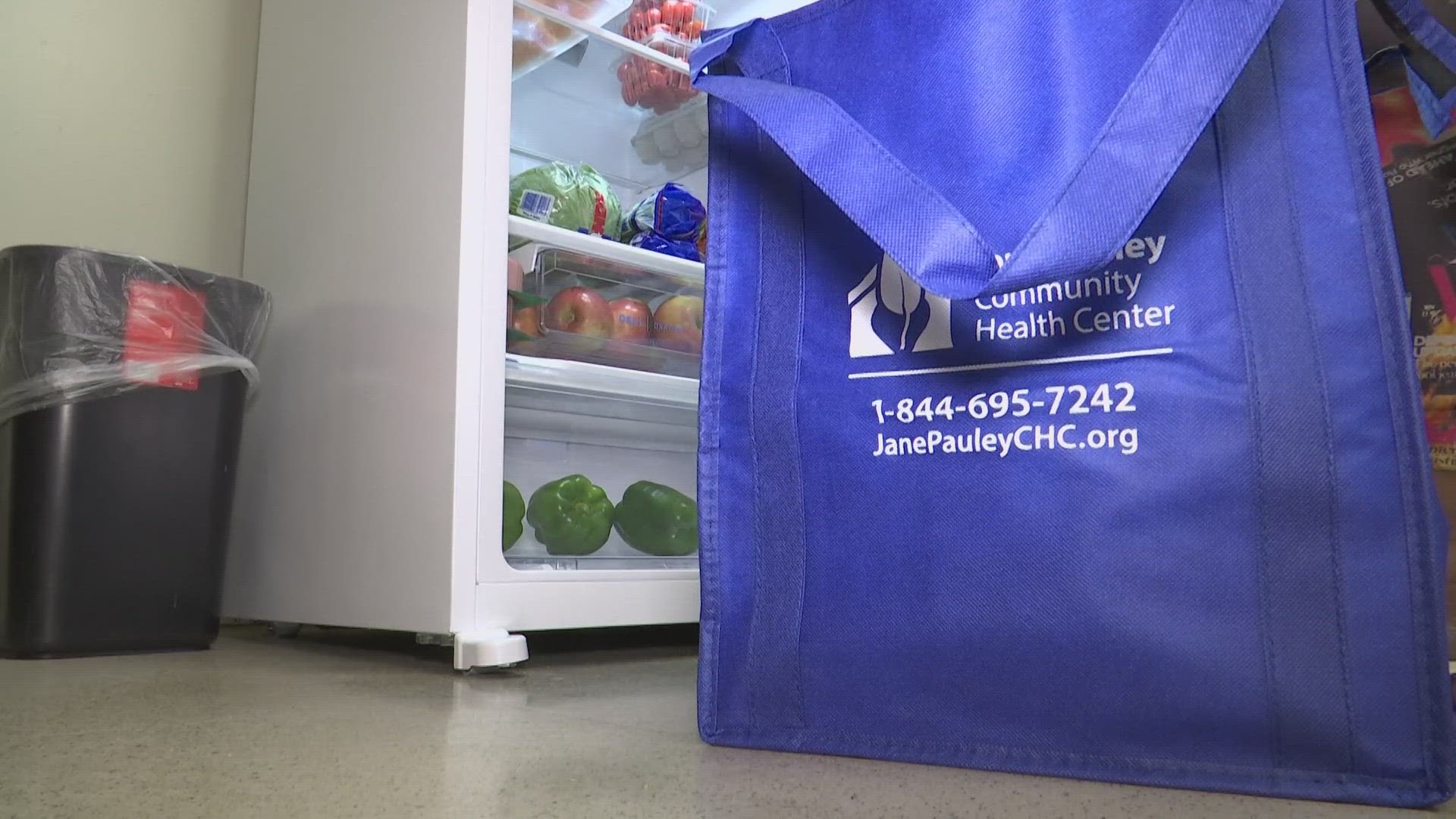INDIANAPOLIS — In Marion County, about a quarter of all residents are battling food insecurity.
According to the Indy Hunger Network, that's about 250,000 Hoosiers.
"There is nobody in our city who is not affected," said Kate Howe, with Indy Hunger Network. "There's no neighborhood. There's no demographic group that isn't impacted by hunger. We need lots and lots of different programs available to meet those needs."
That's why the Jane Pauley Community Health Center (JPCHC) decided to step in and help out.
Staff opened food pantries at nine of its 10 locations, with the last food pantry opening later this year.
"I love what we do," said Nancy Kurd, enabling services senior manager for JPCHC. "I truly love that we are able to do this for our patients."
Patients are able to come by the food pantry once a week to grab non-perishable items, along with fresh produce, meat, and dairy products.
Nester Guillen uses the pantry to help feed his family of five.
"It helps a lot," Guillen said. "Sometimes, the grocery is expensive. Sometimes, it can be $400 a week or sometimes, $800 a month. So it helps a lot."
Betty Eiland has been a patient at JPCHC for more than a year.
"I want to hug everybody," Eiland said. "It's very warm here."
Now, she uses the food pantry every week, with the help of her family.
"It does go a long way," said Carol Thompson, Eiland's daughter. "They come once a week. Her income is monthly, so it's hard to buy food during the week. I thought this was funny when I first started coming because what they give her lasts exactly a week."
"You're talking about love and food," Eiland said. "Love is here, and I can feel it. You know you're loved here."
Kurd said the pantry started last year, when she overheard a patient hurrying to catch the bus and make it to the food bank.
JPCHC started tracking giveaways in November, and since then, the pantry has helped close to 1,500 Hoosiers.
In April alone, Kurd said all nine clinics handed out more than 450 bags of food.
"We don't want to be the best-kept secret in town," said JPCHC CEO Marc Hackett. "We see patients, regardless of their ability to pay. A lot of our patients have no insurance and no income."
Howe said even small pantries like this can make a big difference.
"We want to reduce the number of trips people have to make to get their basic needs met," Howe said. "If they are already coming in for health care, if they get food assistance right there, and they can get healthy food, that's going to make a big difference for people."
Leaders say there are a few reasons why more Hoosiers are lining up for food assistance.
First, inflation is hitting Hoosiers who have never had to ask for help before.
"With inflation and everything costing more and wages not keeping up with the cost, the rising cost of food and rent and everything else people need to buy to survive, people are really struggling," Howe said.
Second, pandemic-era, federal assistance programs ended one year ago in Indiana.
"Ever since those programs have expired, we've been seeing more and more people," Howe said. "Many, many people coming to food pantries for assistance are working, and they're just not making enough money to make ends meet. Sometimes people have a disability, or they are a senior, or they are a child, but also there are a lot of working folks who still need that help. The wages are not keeping up with the cost of the things they need to survive."
Plus, despite overall hunger being highest in the winter, Howe said more children need food assistance in the summer.
That's why Indianapolis Public Schools brought back its summer meal program.
Eleven locations offer lunches to children in the community. Some locations also offer free breakfast.
To help combat the increased need this summer, Indy Parks also brought back its Summer Serving program.
Organizers say since 2013, the program has served close to 3 million meals.
This summer, there are nine locations offering meals Monday through Friday. Plus, a mobile unit stops at more than 30 locations across town.
Back at the JPCHC, Hoosiers say they appreciate the help.
"These people do a great job," Guillen said.
"To me, it really feels like a family," Eiland said.
"Every day, we have 400 people walking in a Jane Pauley door in our 10 sites," Hackett said, "and we have 400 chances to change somebody's life. We hope we're doing it in a positive way."
Pantry organizers say it's about more than offering free food. It's also a learning experience.
"We don't just want to put food on their tables," Kurd said. "We want them to shop with dignity."
Kurd said JPCHC plans to offer cooking classes and lessons to help patients make the most of their free food. Additionally, she said they plan to work with community partners to expand their services to the community.
"No one is in competition with each other," Kurd said. "We want to help each other and build off of each other."
Leaders at the Indy Hunger Network say, for Hoosiers who are able and willing to help, monetary donations to local food banks and pantries are best.
Plus, Howe said volunteers are always needed.
"If you have a few hours, volunteering is critical," Howe said.
For Hoosiers looking for help, Howe suggests starting with Community Compass.
The online tool maps free resources like groceries and meals across central Indiana.

